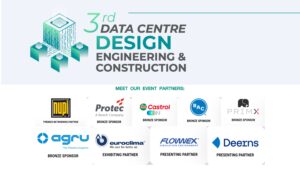Electric vehicles and lithium-ion batteries are seeing a surging demand today. As a result, it has fueled a rapid expansion of gigafactories for battery manufacturing. So, each company is racing to establish large-scale production facilities worldwide. Moreover, the need for flexibility and agility in the construction design is known.
This nimble manufacturing allows companies to adapt to changes quickly. It can include battery chemistries, production volumes, and product mixes. These show key advantages in the fast-moving EV market. This article will explore flexible gigafactory designs covering the need for them, elements, and more. So, let’s get started.
The Need for Agile Gigafactory Designs
The automotive industry is seeing a revolutionary transition. It is swiftly moving from internal combustion engines to electric drivetrains. Moreover, these drivetrains are powered by lithium-ion batters. So, it is driving massive investments in new battery gigafactories globally. Additionally, the demand for such batteries is not slowing down, it is expected to increase 26% by 2030.
Nevertheless, the space of electric vehicle designs and battery technology is ever-evolving. So, there is a need to keep up with the changing battery chemistries, cell formats, and packaging approaches. It helps in higher energy densities, faster charging capabilities, improved safety, and lower costs. This is where agile gigafactory designs prove to be significant. Inflexible facilities optimized for only one type of battery present significant risks. These are production bottlenecks, underutilization, and the inability to adopt better technologies.
Agile gigafactory design provides a crucial competitive edge to battery manufacturers. They allow them to respond faster to industry changes and capitalize on innovations. It also enables just-in-time supply chains and maximizes asset utilization via production flexibility.
Key Elements of Agile Gigafactory Designs
Certain architectural and engineering strategies are vital for building agility in gigafactory designs:
Modular Layout
Gigafactories can design a connected cluster of standardized modules instead of a single sprawling facility. It each houses discrete production steps. So, this allows easy reconfiguration, rearrangement, or expansion of production lines by adding/moving modules.
Modular cleanrooms, warehouses, and auxiliary structures also facilitate the modification of floor space allocation between different functions. It is to adapt to changing needs. Additionally, modularity further enables cost-effective expansion in phases aligned with demand growth.
Interchangeable Manufacturing Equipment
Within modules, designers can create production equipment to be flexible. They can do it by using interchangeable tooling and reprogrammable robots. These can handle different process steps or battery designs. Furthermore, quick connect electrical, fluid, and air interfaces streamline equipment swaps.
As a result, this allows repurposing equipment for new battery chemistries or formats. It avoids stranded assets. Equipment on movable platforms or rails also adds reconfigurability to rearrange floor layouts.
Multifunction Workstations
Workstations capable of multiple functions via flexible programming boost agility for product changeovers. For example, a coating station can apply electrode slurries for different types of cathode or anode materials.
Fewer purpose-built single-function tools lower capital costs while bolstering adaptability. Moreover, workstations drawing power, fluids, and air via standardized overhead busways also facilitate rearrangements.
Open Architectural Plans
Gigafactory structures designed with long structural spans, high ceilings, and minimal interior columns provide “big box” open interiors. As a result, this minimizes obstructions to modifications in manufacturing flow. It also allows maximum flexibility in floor space usage, equipment layouts, and material flows as needs evolve.
Lean Manufacturing Principles
Designing for streamlined material movements between interconnected workstations and minimal work-in-process inventory enhances production agility. Compact, automated warehousing close to production areas also minimizes supply chain lags. This is when changing output.
Applying lean manufacturing principles allows gigafactories to transition faster. This is between different products or production volumes with minimal disruption.
Factory-in-a-Factory and Mini Gigafactory Concepts
Modular gigafactory designs can enable “factories within a factory”. Mini self-contained gigafactory cells for specific battery formats or chemistries could operate independently. However, they still benefit from shared infrastructure. This allows even greater manufacturing flexibility. It also allows easier production isolation for hazardous materials and more options for independent operation or downtime of sections.
So, different customers can also be segregated. This is important for the co-located automaker and supplier facilities. Additionally, the factory-in-a-factory approach may become a hallmark of next-gen agile gigafactory designs.
Adaptable Manufacturing to Master Multi-Product Output
Using adaptable designs and equipment, agile gigafactories can avoid sizeable downtime losses during changeovers between different battery types. Some examples:
Adjustable Formation and Testing for Different Cell Sizes
Formation and testing units designed with adjustable holding fixtures, dexterous robotic arms, and flexible programming enable easy switching between pouch, prismatic, or cylindrical cell sizes and configurations.
Scalable Roll-to-Roll Coating for Different Layer Thicknesses
Roll-to-roll coating tools allow rapid coating width and layer thickness changes for various electrode designs. It is achieved by adjusting roll spacings and coating formulations.
Reconfigurable Tab Welding for Alternate Cell Interconnections
Modular tab welding machines allow quick changeovers between different welding patterns. It is done by altering clamp designs and adding/moving weld heads to match cell tab locations.
Universal Sealing/Filling for Pouch, Prismatic & Cylindrical Cases
Common case sealing & filling tools employ interchangeable jigs, adjustable indexing, and programmable robots. It helps to handle different cell case shapes without retooling.
Such flexible equipment augments overall gigafactory agility to produce a changing mix of battery types, sizes, and formats cost-effectively.
Meeting Surging EV Demand with Scalable Gigafactory Designs
Agile gigafactories engineered for straightforward duplication in modular fashion allow battery manufacturers to rapidly scale production as EV demand grows.
Standardized modules cloned from a basic template and containing interchangeable equipment enable gigafactory expansion without design repetition efforts. Moreover, economies of scale in procuring additional copies of the same equipment also keep unit costs down.
Phased modular buildouts with space reserved for adding identical units ensure gigafactory output can keep pace with market needs. Moreover, a strong foundation of manufacturing agility makes planned scaling more seamless.
Ramping Up and Down in Sync with Market Fluctuations
A gigafactory architecture that is adaptable allows smooth alignment of production levels. It can be consistent with the ups and downs of EV demand compared to an inflexible facility that is only optimized for maximum results.
When a period of low demand approaches, a portion of identical lines can be taken offline. Moreover, this slowdown of operations can easily be applied without disruptions. Furthermore, consolidating operations among fewer modular lines maintains efficiency at lower volumes.
In contrast, reactivating the idled production modules with interchangeable equipment when the need arises is also feasible. It can be done through modular expansion and adding shifts.
The scalability avoids over-capacity risks if a market slump arises. Moreover, it avoids battery shortages if EV sales suddenly see a surge. A lean manufacturing facility thus gives a synchronized demand-driven flexibility.
Future-Proofing Through Built-In Agility
The most significant benefit of agile gigafactory designs is future-proofing assets. This is against unpredictable industry changes on the horizon.
Highly flexible facilities hedge against becoming obsolete due to unforeseen battery advancements or sudden shifts in EV markets. Moreover, manufacturing agility makes gigafactories resilient and responsive in the face of uncertainty.
Built-in agility will ensure gigafactory investments maintain relevance. It also maximizes returns over decades-long operational lifetimes as the auto industry rapidly evolves.
Conclusion
Infusing adaptability through modular, reconfigurable designs and interchangeable equipment is critical for gigafactories. It helps to cost-effectively manage multi-product output while rapidly responding to market fluctuations. As the EV revolution is gathering momentum globally, so is the need for building such factories. To do so, the right knowledge and guidance is needed.
This is where the Global Summit on Gigafactory Design & Construction on 18-19 April 2024 in Berlin, Germany comes into the picture. It is an event that will allow experts in the industry to get insightful case studies and panels. They will be aimed at promoting in-depth exchanges and discussions that address the industry’s challenges in the design and construction of these state-of-the-art facilities. So, make sure you check out the opportunity and register right away!




